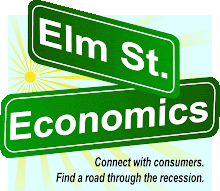Note: The focal point of this story is financial services. But the essence of the story could have implications for a wide variety of business categories.
Recently, a number of issues and stories in the trade press have ignited my curiosity about the banking business, and more specifically, those people who do not use banks or do not use them with regularity.
The first of these articles was from McKinsey Quarterly, “Counting the world’s unbanked.” If you enjoy lofty articles about global issues, click here to read the story. (I found it to be one of those stories that was interesting, but in the context of Elm Street Economics, not entirely useful.)
Of greater interest to me is that pool of local folks who don’t use a traditional bank or credit union… and evidence suggests that the number is growing. These “unbanked” consumers might be living in a mainly cash economy, or sating their basic financial service needs through emerging, non-traditional providers like check cashing services.
If you work for a bank or credit union, this headline will get your attention: Wal-Mart is expanding their focus on financial services, according to this story from Media Post Marketing Daily. The article cites a recent survey by the Federal Deposit Insurance Corp. that found 25.6% of all U.S. households are unbanked or “under-banked.” When I did a Google search on the topic, I actually came across this one-page fact sheet—on Wal-Mart letterhead, dated 2008—gauging the depth and opportunity of this market.
Here's a more recent story on the matter, from CNN/Money.
Implications: When every fourth household in the U.S. is undecided or uncommitted with regard to their banking relationships, it’s a category worth thinking about. And if you’re in any category of retail service, you might ask whether similar conditions exist in your industry/business:
Has the industry focused on “blue chip” consumers for so long than an entire generation of emerging customers has not been sought after or fought over? If you’re a bank, does your marketing welcome consideration by the unbanked or under-banked consumer?
Has the consumer changed in ways that are not matched by changes in the banking industry?
With the fiscal meltdown and bank bailouts that were symptomatic of The Great Recession, has the credibility and stature of this category been further diminished? (Let’s face it: Even if you run the most solvent bank on the planet, you’re still a bank… and the banking industry has received a lot of bad press over the past few years.)
Insurance companies now sell investments, car dealerships offer auto loans, employers offer retirement plans, a plethora of companies (including numerous dot-coms) sell mortgages, and home improvement stores offer credit cards that can conveniently replace a home improvement loan. How do banks regain their standing as the chief financial service provider for the household, amidst all of this diverse competition? (Especially when a company like Wal-Mart is has decided to become another of those competitors.)
With all of those diverse financial resources to compete with, which niche could provide the most significant opportunity—a place for the financial institution to gain a foothold in their quest to re-acquire customers?
Sometimes, the value in trend watching is not to have all the right answers, but to begin asking all the right questions.
Mike Anderson
Tuesday, April 6, 2010
Courting the "unbanked"
Subscribe to:
Post Comments (Atom)



No comments:
Post a Comment